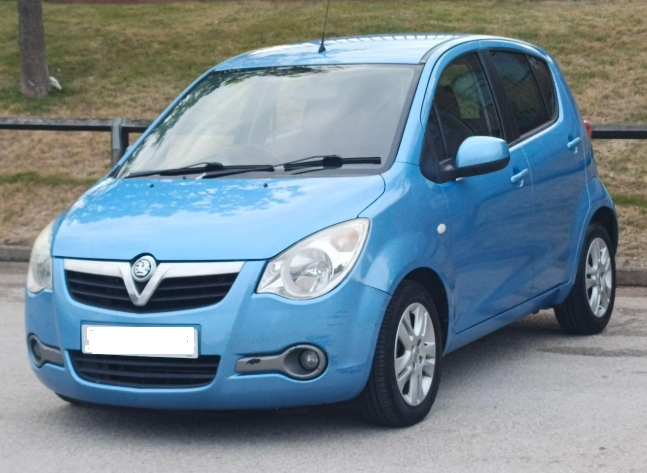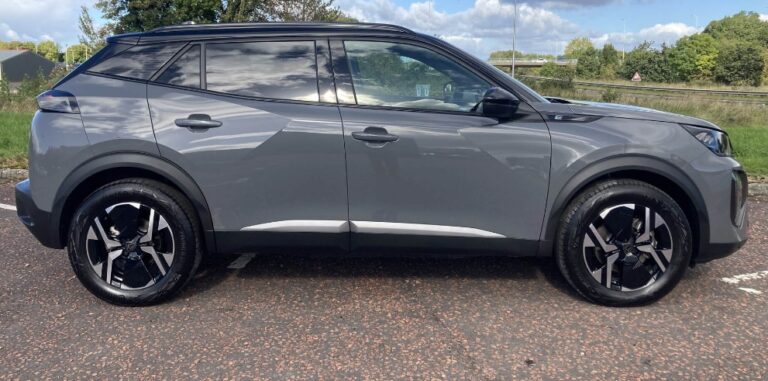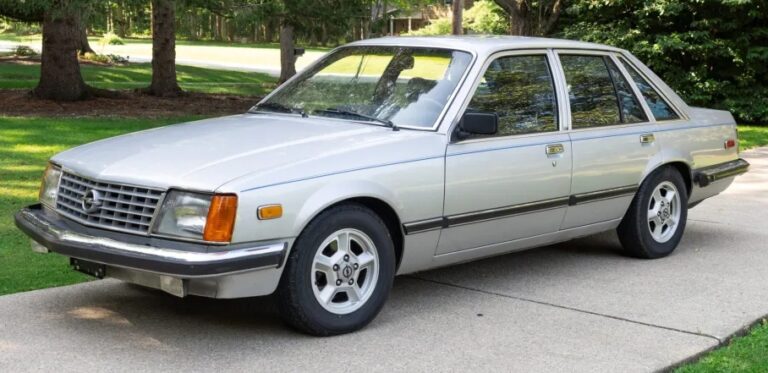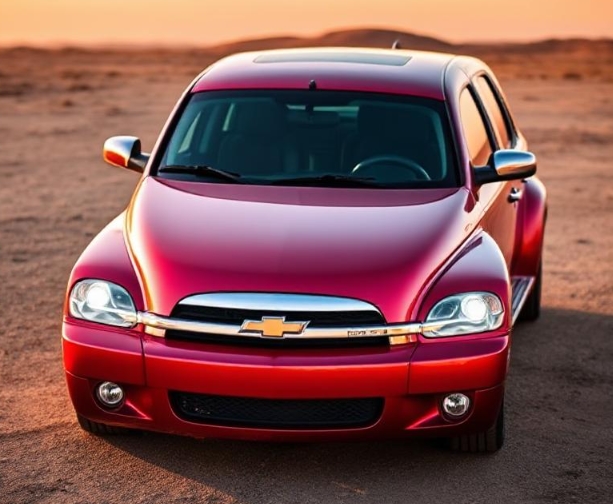The Little Giant: The Evolution of the Opel Agila
In the sprawling, often-congested landscape of European cities, the humble city car has long been king. It’s a segment defined by compromise and ingenuity, where engineers are tasked with packaging maximum utility into a minimal footprint. For German automaker Opel, its answer to this urban puzzle for nearly fifteen years was the Agila—a vehicle whose story is not one of solitary innovation, but of a successful and transformative partnership that mirrored the changing demands of the European motorist. The Agila’s evolution across two distinct generations is a fascinating case study in practicality, packaging, and the power of global collaboration.
The Genesis: Opel Agila A (2000-2007) – A Study in Pragmatism
By the late 1990s, the market for small, affordable cars was booming. Models like the Ford Ka and Renault Twingo had proven there was a strong appetite for compact, characterful vehicles. Opel, seeking a quick and cost-effective entry into the sub-B segment (often termed the A-segment or city car class), looked beyond its own development centres. The solution came from the East, through a strategic alliance with Suzuki, a brand renowned for its mastery of small-car design, particularly in the Japanese Kei car market.
The result was the Opel Agila A, which made its debut in the summer of 2000. It was not an Opel from the ground up, but a rebadged and slightly re-engineered version of the Suzuki Wagon R+. This “badge engineering” approach was pragmatic; it gave Opel a proven, reliable platform without the immense cost and time of all-new development. The Agila A and its Suzuki twin were built side-by-side at Opel’s plant in Gliwice, Poland, a testament to the efficiency of the partnership.
Design and Philosophy
The Agila A was the personification of “form follows function.” Its design was unapologetically boxy, a “tall-boy” or “microvan” aesthetic that prioritized interior space and ease of access above all else. With a short bonnet, an almost vertical windscreen, and a flat, upright rear, every centimetre of its tiny footprint was dedicated to the cabin. This design yielded a surprisingly cavernous interior for a car just 3.5 metres long. The high roofline and elevated seating position provided excellent visibility and made getting in and out effortless, a feature particularly appreciated by older drivers and those with mobility challenges. The interior was spartan and built from hard-wearing plastics, emphasizing durability over luxury.
.
THIS is GOOD stuff if your car is in need:

.
Models and Trim Levels
The Agila A’s trim structure was straightforward, reflecting its value-oriented positioning. While names varied slightly by market, the hierarchy was generally consistent:
Basis / Essentia: The entry-level model was truly basic. It typically came with 13-inch steel wheels, unpainted black bumpers and door mirrors, manual windows, and a very simple dashboard. Power steering was often an optional extra on the very earliest base models.
Comfort / Enjoy: This was the volume seller and added essential creature comforts. Features typically included power steering as standard, body-colored bumpers, central locking, and often a basic radio/cassette player.
Elegance / Cosmo: The top-tier trim aimed for a more premium feel. It added features like 14-inch alloy wheels, electric front windows, electrically adjustable and heated door mirrors, air conditioning, front fog lights, and upgraded interior upholstery. A rev counter was also a feature of this trim level.
Engine Line-up and 2003 Facelift
The initial engine range was modest, designed for urban efficiency rather than outright performance.
1.0 12v: A 973cc, 3-cylinder petrol engine producing 58 hp. Known for its distinctive thrum, it was economical but required vigorous driving to keep up with faster traffic.
1.2 16v: A 1,199cc, 4-cylinder petrol engine producing 75 hp. This was the more balanced choice, offering significantly better flexibility and making the Agila more comfortable on motorways.
In August 2003, the Agila A received a mid-life facelift. The changes were subtle but effective. A new chrome-accented grille and clear-glass headlights freshened the front end, while revised bumpers and tail-light clusters updated the rear. The interior received improved materials and new upholstery options. The most significant update, however, was under the bonnet.
The 1.0-litre engine was updated with TwinPort technology, boosting power slightly to 60 hp and improving fuel economy.
The 1.2-litre engine also gained TwinPort, increasing its output to a more robust 80 hp.
Crucially, a diesel option was introduced: the 1.3 CDTI. This was the celebrated MultiJet engine, a product of a joint venture between Fiat and General Motors.
Producing 70 hp and a healthy amount of torque, it offered exceptional fuel economy, making the Agila an even more frugal runabout.
The Agila A was a quiet success. While critics sometimes derided its boxy styling and basic interior, customers appreciated its immense practicality, low running costs, and unwavering reliability. It had carved a niche for itself as the sensible, spacious choice in the city car market.
A Splash of Style: Opel Agila B (2007-2014) – Function Meets Form
By the mid-2000s, the city car segment was evolving. Style, safety, and a more engaging driving experience were becoming just as important as practicality. Competitors like the Fiat 500, Citroën C1, and the second-generation Ford Ka demonstrated that small cars could be both functional and fashionable. The purely pragmatic approach of the Agila A was no longer enough.
Once again, Opel turned to its partner Suzuki. This time, the collaboration resulted in the Suzuki Splash and its twin, the Opel Agila B, which was unveiled at the 2007 Frankfurt Motor Show and went on sale in early 2008. While the first generation was built in Poland, production for both the Splash and the new Agila B moved to Suzuki’s plant in Esztergom, Hungary.
Design and Philosophy
The Agila B was a radical departure from its predecessor. The box was gone, replaced by a dynamic, youthful design with rounded edges, a steeply raked windscreen, and teardrop-shaped headlights. A rising beltline and a neatly integrated rear spoiler gave it a sense of motion, while the wheels were pushed to the corners to maintain a stable stance and maximize cabin space.
Despite this stylistic transformation, the core philosophy of a “tall” city car remained. The Agila B was still taller than most rivals, preserving the excellent headroom and high seating position that made the original so popular. The interior was a quantum leap forward. Higher-quality materials, a more modern dashboard design with a distinctive pod-mounted tachometer, and available two-tone color schemes created a far more inviting and cheerful environment. It successfully blended the practicality of a mini-MPV with the stylish appeal of a contemporary supermini.
Models and Trim Levels
The trim structure was revised to reflect the car’s more sophisticated character, generally following Opel’s established naming convention.
Essentia: The base model remained a value proposition but was better equipped than its predecessor. It usually included central locking, electric front windows, and a CD player with MP3 compatibility. Crucially, safety was enhanced, with multiple airbags and ABS becoming standard across the range.
Enjoy: This popular mid-range trim built upon the Essentia, adding key features like air conditioning, a multifunction steering wheel, electrically adjustable door mirrors, and often 15-inch steel wheels with full covers.
Cosmo: The top-spec model added a touch of flair. It was distinguished by 15-inch alloy wheels, front fog lights, tinted rear windows, a leather-wrapped steering wheel, and more premium interior fabrics.
Special editions, such as the “Design Edition,” were also offered in various markets, bundling popular features and unique exterior colours or interior trims.
Engine Line-up
The engine range was entirely new, focusing on improved efficiency and refinement, with all units complying with stricter Euro 5 emissions standards later in its life.
1.0 12v: An all-new 996cc, 3-cylinder petrol engine (Suzuki’s K10B) producing 65 hp (later 68 hp). It was smoother and more economical than the previous 1.0-litre unit.
1.2 16v: A new 1,242cc, 4-cylinder petrol engine (Suzuki’s K12B) with 86 hp (later uprated to 94 hp with VVT). This engine provided lively performance and was notably more refined. Crucially, it was also available with a 4-speed automatic transmission, broadening its appeal to city dwellers who wanted to dispense with a clutch pedal.
1.3 CDTI: The familiar and frugal 1.3-litre diesel engine carried over, now producing 75 hp and equipped with a diesel particulate filter (DPF) to meet emissions regulations.
The Agila B was received far more warmly by the press than its predecessor. It was praised for its sharp handling, comfortable ride, vastly improved interior, and stylish looks, all while retaining the practicality that was the Agila’s hallmark.
The End of an Era and the Agila’s Legacy
Production of the Opel Agila B ceased in late 2014. The market had shifted once more, and so had Opel’s strategy. The fruitful partnership with Suzuki in this segment came to an end. Opel’s new city car, the Karl (sold as the Vauxhall Viva in the UK), launched in 2015, was a product of the wider General Motors family, sharing its platform with the Chevrolet Spark. The Karl was a more conventional five-door hatchback, abandoning the Agila’s signature “tall-boy” architecture.
The Opel Agila’s legacy is twofold. Firstly, it stands as a monument to successful badge engineering. Over two generations, the collaboration with Suzuki allowed Opel to compete effectively in a segment it might have otherwise neglected, leveraging Japanese expertise in small-car packaging to create vehicles perfectly suited for European tastes.
Secondly, the evolution from Agila A to Agila B perfectly encapsulates the changing priorities of the European car buyer. The Agila A was a product of an era where pure, unadorned utility was a strong selling point. The Agila B showed that by the late 2000s, even the most practical cars needed to offer style, modern features, and a sense of fun. From a simple box on wheels to a stylish and dynamic micro-MPV, the Opel Agila was the little giant that cleverly adapted to its ever-changing urban jungle.







